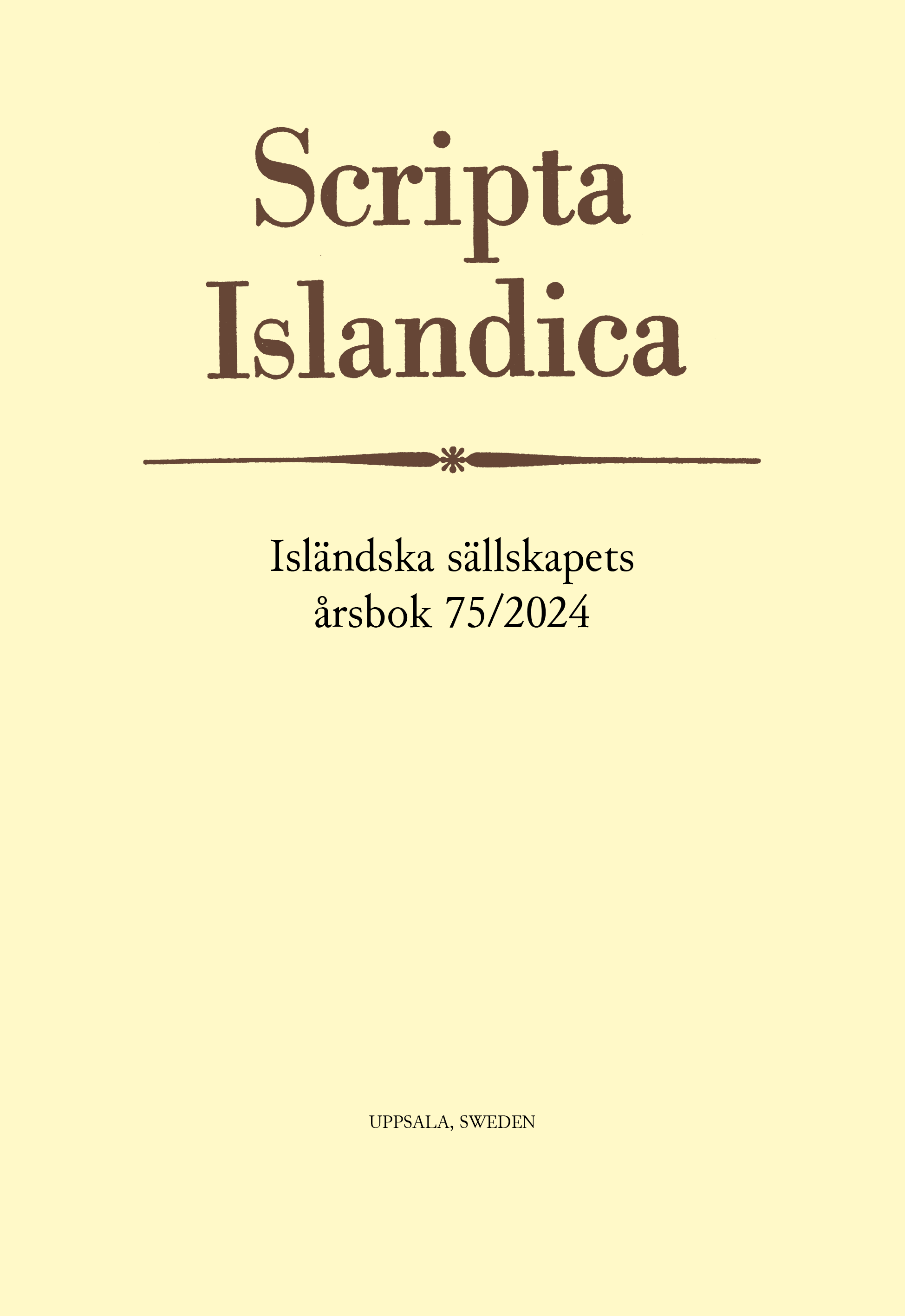Defining the Human
Skin, Shapeshifting, and Sin
DOI:
https://doi.org/10.63092/scis.75.44551Nyckelord:
Biblical Studies, Theology, Werewolves , Trolls, Shapeshifting, IdentityAbstract
This article focuses on depictions of skin(s) – fleshy objects used to cover the human body that are representative of a state of being or a specific identity. In contrast to the traditional interpretation, connecting skin-wearing with mythological or shamanistic shapeshifting, I connect the literary use of skins donned by monstrous figures in the Old Icelandic corpus to the animal skin garments that were fashioned for Adam and Eve after their expulsion from Paradise. This important detail of the protoplasts’ new clothing within the widely-disseminated story of the fall of man has been overlooked as a literary topic of any substance in the field of Old Norse-Icelandic literature, although it has recently received attention in neighboring fields, underlining its wider literary importance in the Middle Ages. The allegorical meaning attached to the garments by Late Antique and medieval theologians – that of shame and animality – provides a fruitful avenue through which to interpret further depictions of humans in animal skins in Old Icelandic literature. This symbolism surrounding the human-in-animal allows for a reading of a human-animal hybridity, while also underlining the negative connotations that come with bestial behavior, thus distinguishing man from beast. Non-human behavior and appearance can be tied to the corruption of humanity as a result of original sin. These reflections clarify the task of defining what is not or should not be the paragon of humanity.
This study focuses on two examples. The first is the trolls of the Hrafnistumannsögur. There are four sagas in total, Ketils saga hængs, Gríms saga loðinkinna, Örvar-Odds saga, and Áns saga bogsveigis. Each saga presents (a) troll-ish figure(s) wearing animal skin clothing, using the same terminology for the clothing that is used to describe Adam and Eve’s garments. The second focus of this study is on later medieval depictions of humans donning an animal skin in order to “turn” into wolves (were-wolves, if you must), stories that provide fertile material with which to interpret the Christian rhetoric of the animality of humans after the fall of man. These depictions are found in medieval Romance or sagas from nearby genres that are heavily influenced by the Romance genre, such as Völsunga saga, Ála flekks saga, Tíodels saga, and Marie de France’s Strengleikar. These two examples of skin-wearing represent a medieval Icelandic mindset that grapples with the separation of humans from other animals, what that means, what the consequences of crossing over from humanity to animality are, and finally, how to define the human by identifying the animal.
Downloads
Publicerad
Referera så här
Nummer
Sektion
Licens

Det här verket är licensierat under en Creative Commons Erkännande 4.0 Internationell-licens.
Författare till innehåll publicerat i Scripta Islandica behåller upphovsrätten till sina verk.
För volymerna 67 och tidigare: innehållet publicerades utan en CC-licens, och upphovsrätten innehas av respektive författare och Scripta Islandica. Se tidskriftens Policy för Öppen Tillgång


